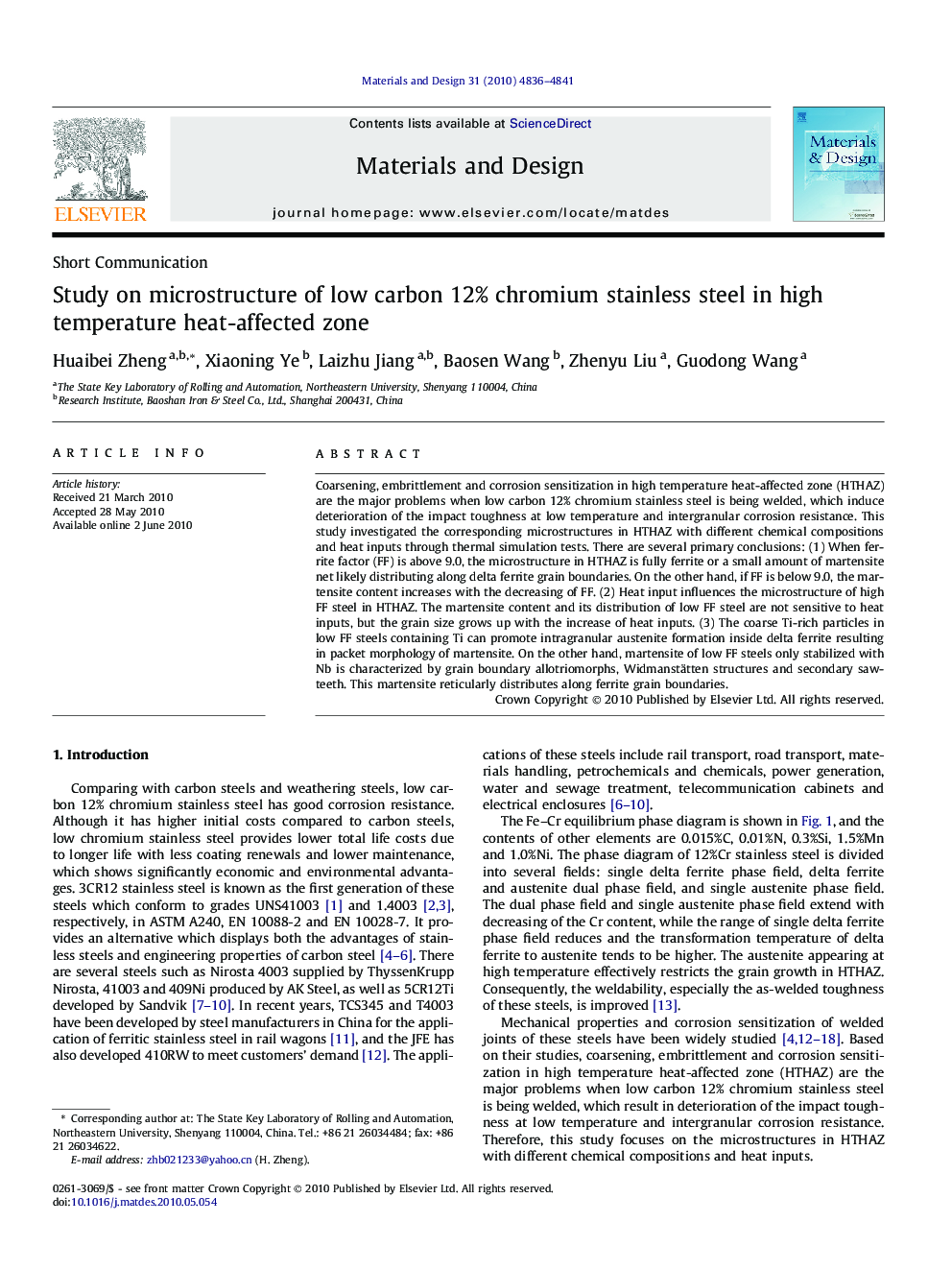| Article ID | Journal | Published Year | Pages | File Type |
|---|---|---|---|---|
| 831778 | Materials & Design (1980-2015) | 2010 | 6 Pages |
Coarsening, embrittlement and corrosion sensitization in high temperature heat-affected zone (HTHAZ) are the major problems when low carbon 12% chromium stainless steel is being welded, which induce deterioration of the impact toughness at low temperature and intergranular corrosion resistance. This study investigated the corresponding microstructures in HTHAZ with different chemical compositions and heat inputs through thermal simulation tests. There are several primary conclusions: (1) When ferrite factor (FF) is above 9.0, the microstructure in HTHAZ is fully ferrite or a small amount of martensite net likely distributing along delta ferrite grain boundaries. On the other hand, if FF is below 9.0, the martensite content increases with the decreasing of FF. (2) Heat input influences the microstructure of high FF steel in HTHAZ. The martensite content and its distribution of low FF steel are not sensitive to heat inputs, but the grain size grows up with the increase of heat inputs. (3) The coarse Ti-rich particles in low FF steels containing Ti can promote intragranular austenite formation inside delta ferrite resulting in packet morphology of martensite. On the other hand, martensite of low FF steels only stabilized with Nb is characterized by grain boundary allotriomorphs, Widmanstätten structures and secondary sawteeth. This martensite reticularly distributes along ferrite grain boundaries.
